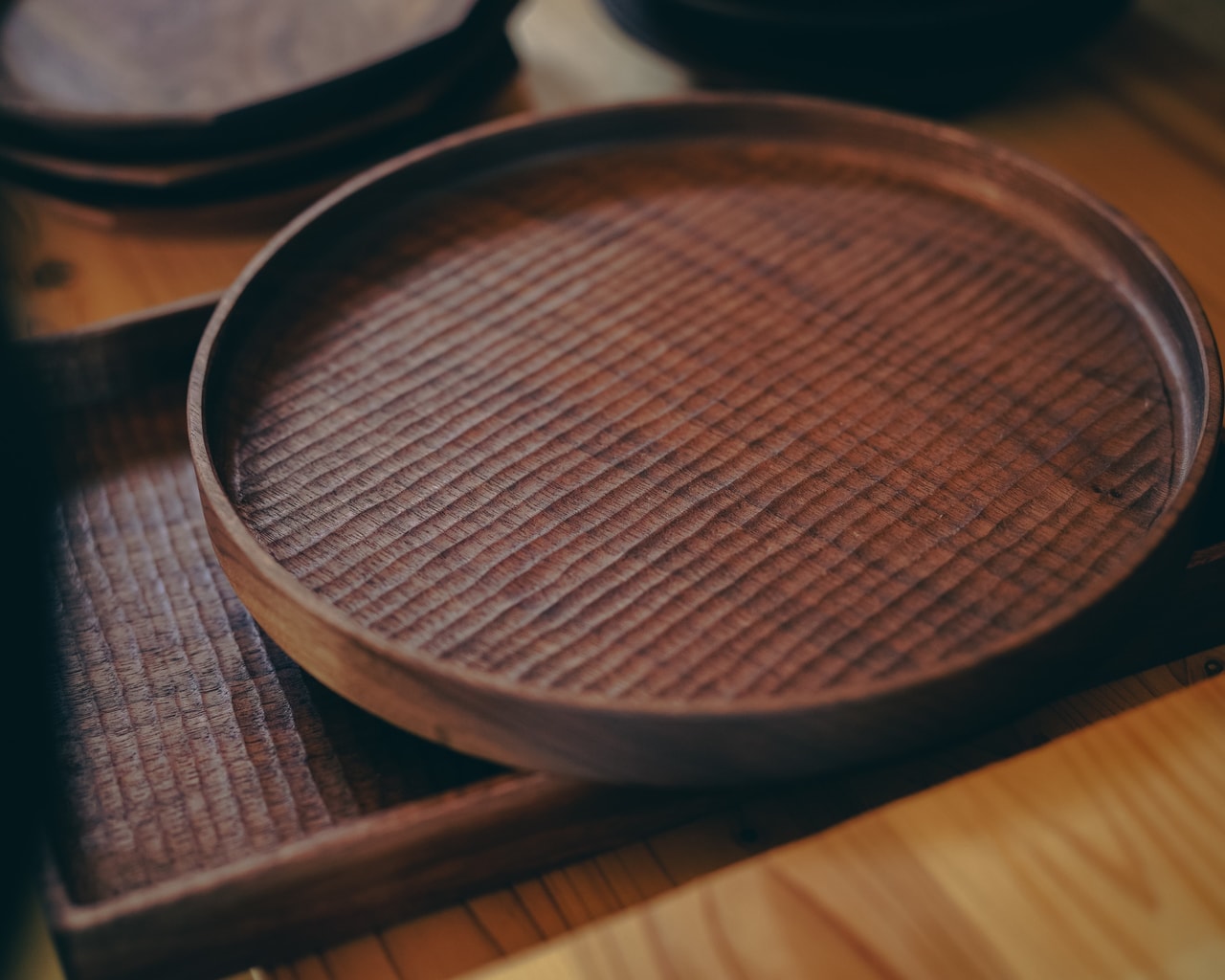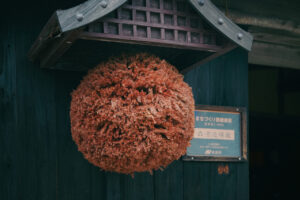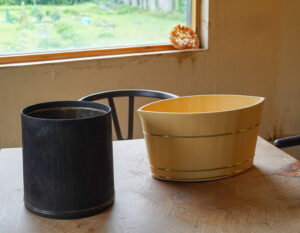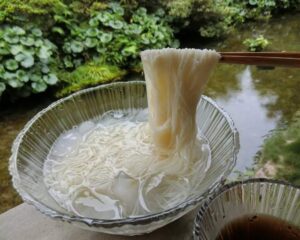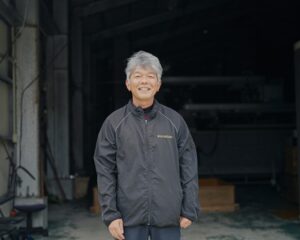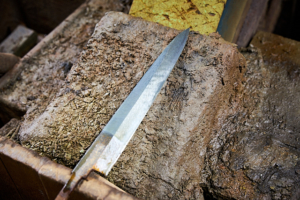Based on the simplicity of casual usability, the woodworker Koji Hori’s
unique style with his subtle design as an artist is very attractive.
He carefully produces vessels filled with simple gentleness one by one,
which can bring a little warmth and serenity to your daily life, as well as time and space.
Mr. Koji Hori makes wooden utensils in Sasebo City, Nagasaki Prefecture. His tableware that brings out the universal qualities of wood, such as the grain and texture, is so well received that some customers wait a year for their tableware. We visited his workshop in Sasebo City to find out.
From a Self-Defense Forces Personnel to a Woodworker
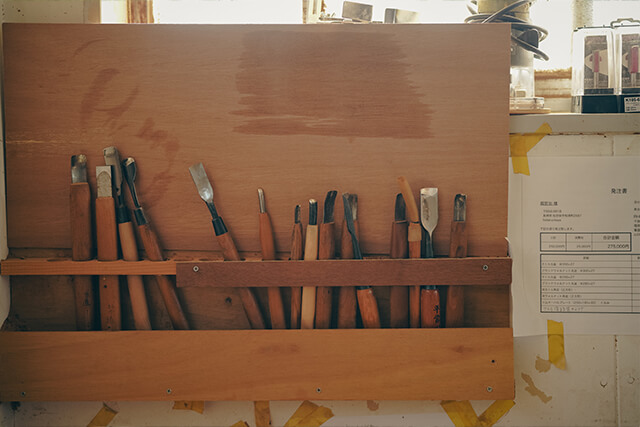
The northern part of Nagasaki Prefecture. In a corner of an industrial area by the sea in Sasebo City, there is a small workshop. In a space of about 10 tatami mats, there are many pieces of wood, machines, and tools. On a shelf at the entrance, freshly finished wooden tools are randomly lined up.
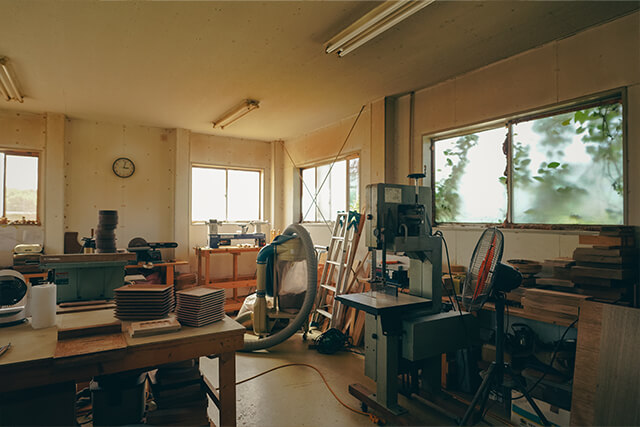
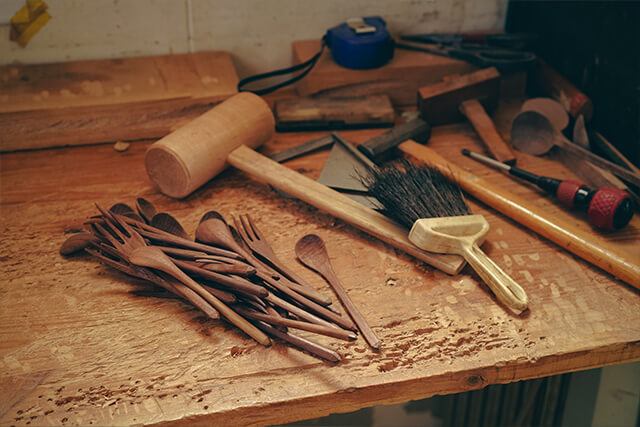
Leaving the Self-Defense Forces to Work for an Interior Design Company
Born and raised in Sasebo City, Nagasaki Prefecture, Mr. Hori was influenced by his father, who was a member of the Maritime Self-Defense Force, and after graduating from high school, he joined the Maritime Self-Defense Force himself. He has a unique background in that he was transferred from Sasebo Air Base to Yokosuka, where he was engaged as a Self-Defense Forces member.

After working as a Self-Defense Forces member for three years, he found a job at an interior design company in Tokyo, hoping to work in the furniture business, which he had always been interested in. At the same time, Mr. Hori had always wanted to make a living by making his own wooden furniture someday. His first encounter with woodworking was when he started attending a woodworking class on weekends. The more he learned about woodworking, the more he was drawn into its deep appeal. However, after conducting his own market research, Mr. Hori felt that it would be difficult to make a living making furniture. So he started making wooden trays as part of his tableware line, which included wooden bowls andcutlery that he had enjoyed since he was a young man.

Creating during the day, working part-time at a tavern at night
After moving to Kamakura and commuting to work at a company in Tokyo while continuing to make trays on weekends, it was around 2006 that Mr. Hori started his own business. At first, he had few clients, and in the evenings he made a living by working part-time at a nearby izakaya (Japanese-style pub). What brought about a change in his situation was a general merchandise store that he jumped into as a sales pitch. The owner, a connoisseur, selected and sold carefully crafted household goods, and the store was well known throughout Japan.
I’m really not good at sales,” he said. I researched stores that had a concept close to my own, and I gathered up all my courage and made a sales pitch,” he recalls with a wry smile.
I wanted to create something beautiful and usable for a long time. It was a great encounter with a general store that was quick to adopt such a now commonplace point of view, and once business began, Hori’s wooden tools naturally took on a life of their own . After the business relationship began, Hori’s wooden tools naturally began to take on a life of their own.
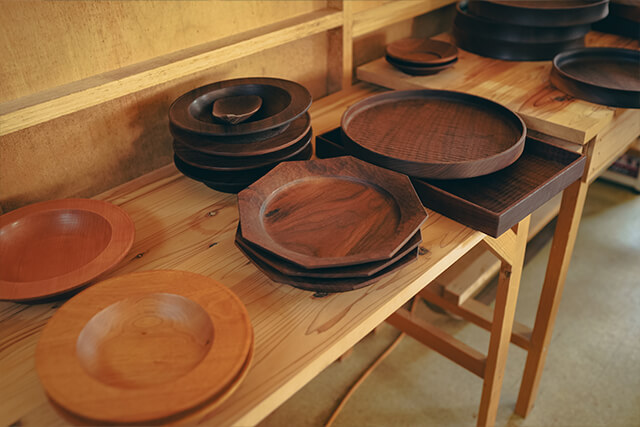
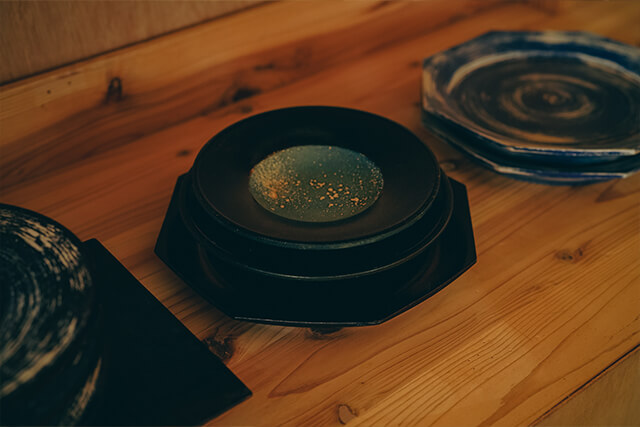
Tools for Any Occasion
Currently, Mr. Hori is working on a wide range of tableware, including trays, bowls, spoons, forks, butter cases, and more. His works, which are characterized by the carved patterns that remain on the surface of each piece of wood, are easy to fit in one’s hand and give a sense of warmth. After carving, he soaks the carved pieces in wood hardener, which preserves the texture and feel of the wood and increases its strength, and lets them dry. When we use urethane paint, it inevitably has a plastic feel. I use sesame oil because I want the wood to feel like it has its own texture,” says Hori. The natural texture of the wood is perfect for everyday use, special occasions , oras a gift, and can be used in any situation.
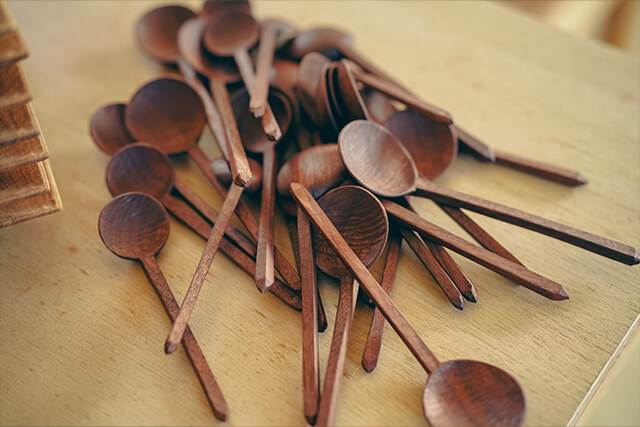
Speaking of Mr. Hori, round trays
One of Mr. Hori’s best-known creations is the round tray. In addition to having a deep and stable rim, the natural texture of the tray and the ease with which it fits in one’s hand make it a perfect supporting piece for a variety of dishes. The medium-sized tray can be used as a plate, while the small-sized tray is perfect for placing a drink and a small snack. The wood’s ability to change color with age and develop a deeper sense of flavor is also a unique quality of the wood.
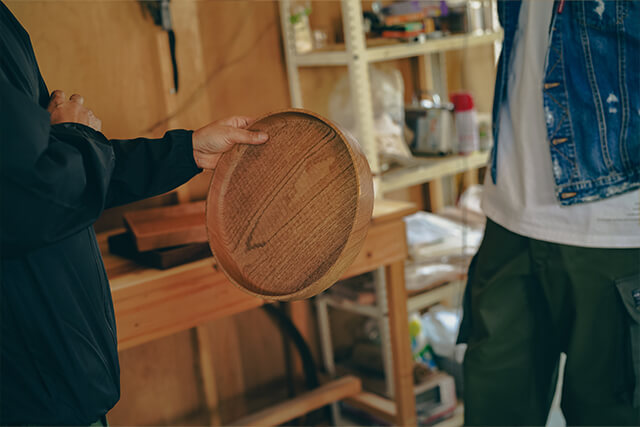
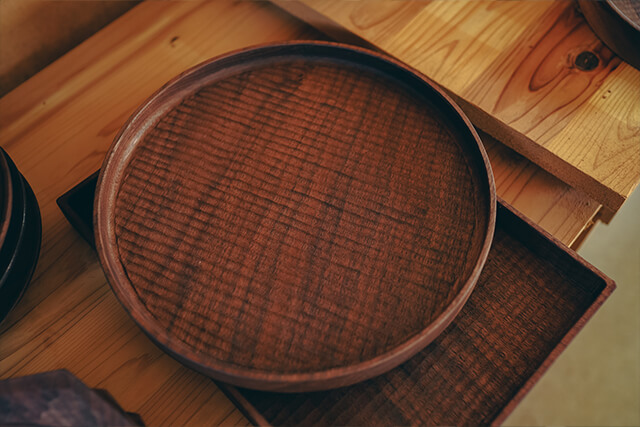
Inspired by old folk tools sunk at the bottom of a dam
One thing that many of Hori’s works have in common is a unique carving pattern of straight lines wavy in the middle. This style was inspired by the Wagatabon of Ishikawa Prefecture. Wagatabon originated in the village of Wagaya (now Kaga City), where carpenters and joiners carved chestnut trees with a single chisel as a tool for daily life. It is said that the Gaya-bon once ceased to exist in the Showa period (1926-1989), when Gaya-mura sank below the bottom of a dam, but in recent years, a nationwide movement of woodworkers who are self-taught in the technique are trying to revive it.
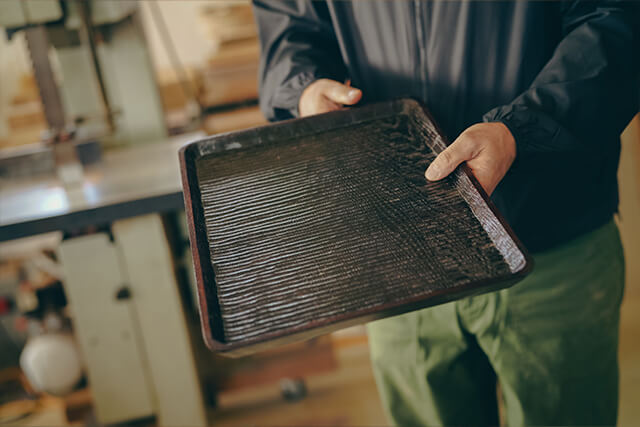
Mr. Hori is one of those who are fascinated by the Gaya-bon. Because they are folk tools, they have a rough-hewn, rugged look and feel, and he has taken this and sublimated it beautifully into his own style. The wood used and the process of making the trays are different, but I cut the trays by hand, daring to leave straight lines. The power of each line is very powerful when you see the finished product.
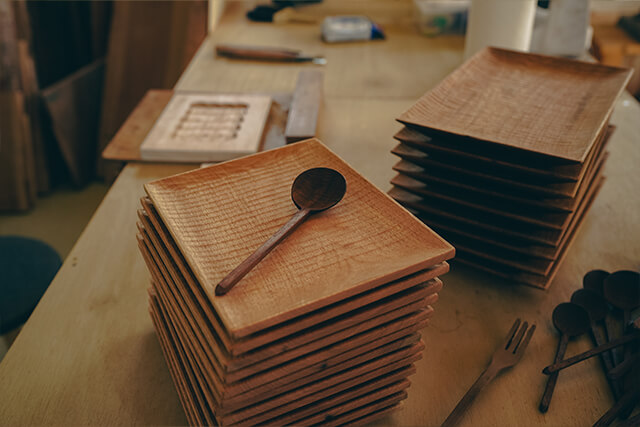
A new base that combines atelier, gallery, and residence
In 2017, Hori returned to his hometown of Sasebo City, where he continues to work in his current studio. He commutes to his atelier every morning from his house a short distance away, but he is now planning to “eventually build a base that combines an atelier, gallery, and residence, and live surrounded by the things I make.
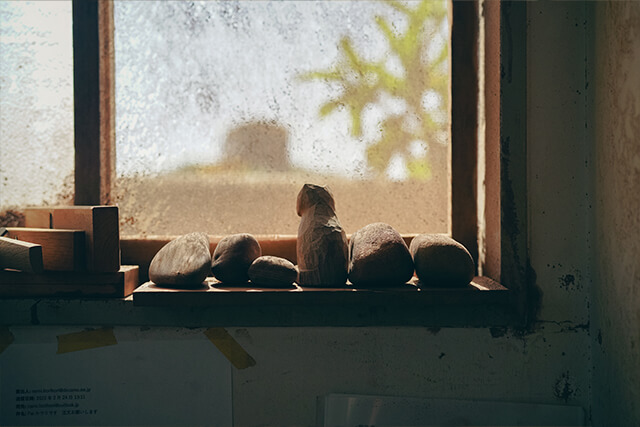
While working in silence, I serve tea to visitors to the gallery and invite people over for small parties. It’ s not fancy by any means, but I would be happy if I could lead a rich life in the sense that it fills my heart, and if I could fulfill my life with it. I would like to make art objects someday,” he says of his endless dreams.
The expression of the uneven wood that is visible and hidden in the simplicity and sharpness of the work. Hori’s wooden tools remind us that it is this fluid beauty that contrasts with the uniformity and orderliness of mechanical beauty, and that is why we will always be fascinated by them. We look forward to the birth of a new center in the near future where we can pick up Hori’s tools and experience their natural beauty.

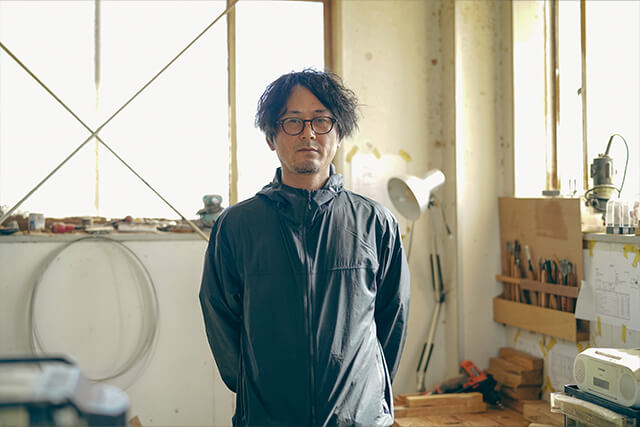
Having even one “wooden” item on the dinner table every day adds warmth and serenity to the space and time spent there. I would be happy if you could feel a little healing by using my work in your hectic daily life and enjoy the pleasure of living with woodwork.



